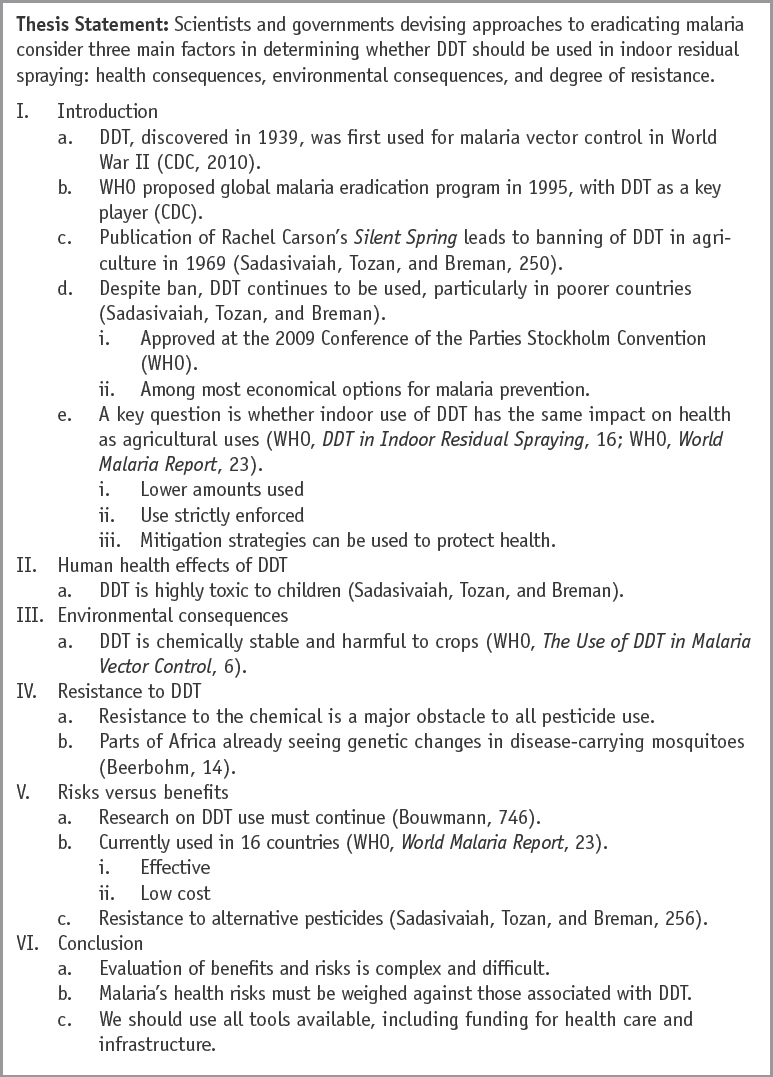Create a Formal Outline
A formal outline provides a complete and accurate list of the points you want to address in your document. Formal outlines use Roman numerals, letters, and Arabic numerals to indicate the hierarchy of information. An alternative approach, common in business and the sciences, uses numbering with decimal points.

Writers use formal outlines to identify the hierarchy of arguments, ideas, and information. You can create a formal outline to identify
- your thesis statement
- the reasons you offer to support your thesis statement
- the sequence in which your reasons should be presented
- evidence to support your reasons
- the notes and sources you should refer to as you work on your draft
The most common types of formal outlines are topical outlines and sentence outlines.
Topical outlines present the topics and subtopics you plan to include in your document as a series of words and phrases. Items at the same level of importance should be phrased in parallel grammatical form. In her topical outline for her informative essay about DDT use in the prevention of malaria, featured writer Ellen Page identified her main point, listed her reasons, mapped out the supporting evidence for her reasons, and used a conventional system of Roman numerals and letters.
Sentence outlines use complete sentences to identify the points you want to cover. Sentence outlines begin the process of converting an outline into a draft of your document. They can also help you assess the structure of a document that you have already written.
Using her topical outline as a starting point, Ellen Page wrote a sentence outline to test her ideas. Part of her sentence outline is shown below.
